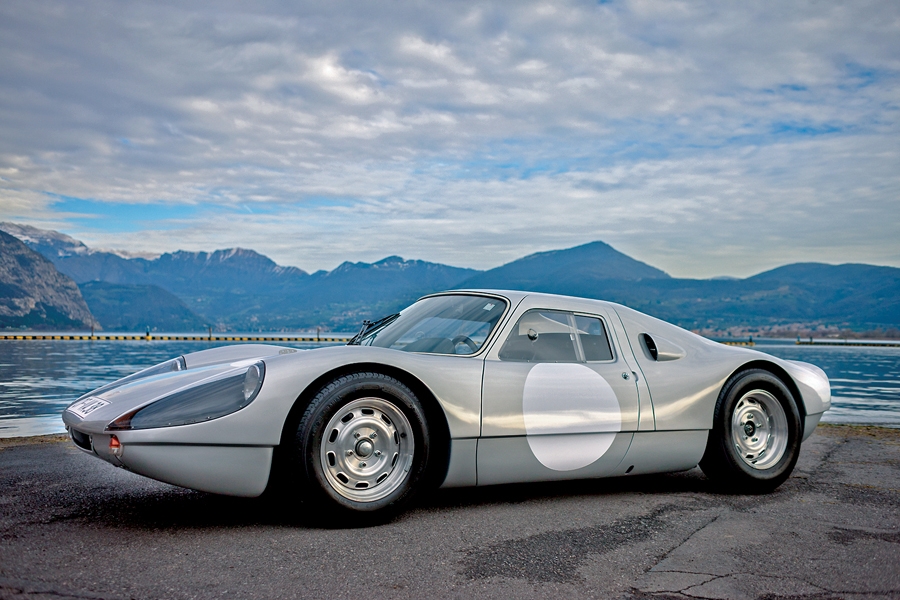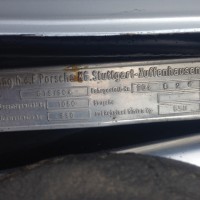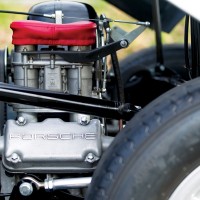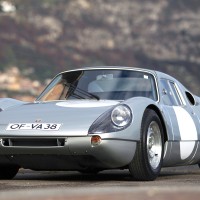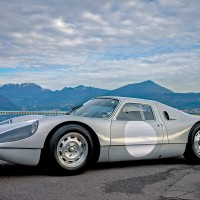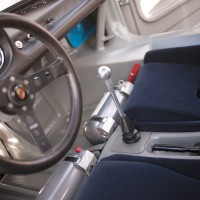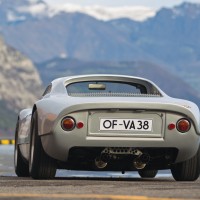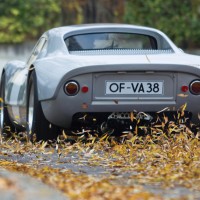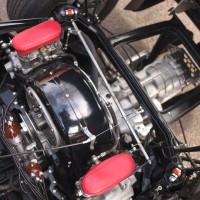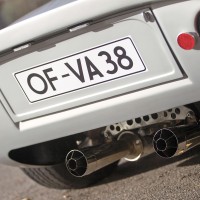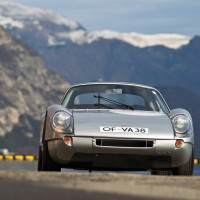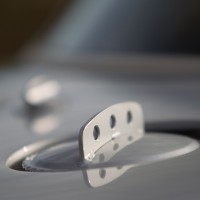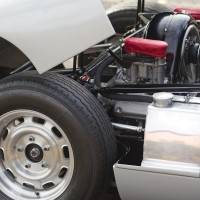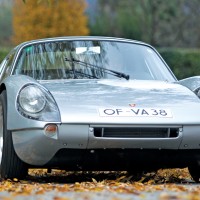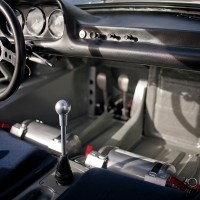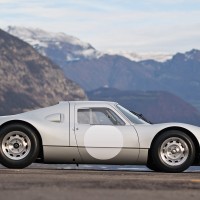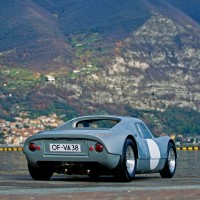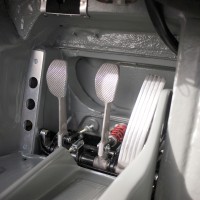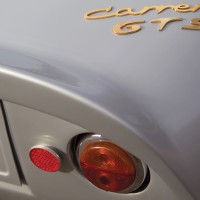SCM Analysis
Detailing
| Vehicle: | 1964 Porsche 904 Carrera GTS |
| Years Produced: | 1964 |
| Number Produced: | 110 |
| Original List Price: | $7,425 (factory) |
| SCM Valuation: | $2,750,000–$3,750,000 |
| Chassis Number Location: | On riveted tag on front bulkhead and a welded tag on the rear crossmember |
| Engine Number Location: | Front of case between distributors |
| Club Info: | Porsche Club of America (PCA) |
| Website: | http://www.pca.org/ |
| Alternatives: | 1963–64 Alfa Romeo TZ-1, 1963 Abarth Simca 2000 |
| Investment Grade: | A |
This car, Lot 144, sold for $1,635,060, including buyer’s premium, at RM Auctions’ Paris sale on February 4, 2015.
Although I doubt that anyone was aware of it at the time, the world of racing automobiles changed forever in 1964. The proximate cause was the January introduction of Dunlop’s lower-aspect Grand Prix racing tire (a 60 series, by today’s terminology), but this was just the beginning of an avalanche of improved technologies and changed realities that over the next few years completely changed the nature of racing cars.
In essence, the sports racers through the late 1950s and early 1960s were fundamentally road-worthy sports and GT cars that were optimized for competition, while the racers of the late 1960s abandoned all but the most flimsy pretense of road usability. Designed in 1963 and produced in early 1964, the Porsche 904 sits right at the cusp of this change.
Porsche goes back to its roots
After some frustrating years trying to contest the Formula One GP circuit, Porsche decided in the early winter of 1962 to abandon open-wheel racing and concentrate on their roots in under-2-liter GT for the 1963 season and beyond.
Porsche had done well in 1961 and 1962 using a two-pronged strategy: using the 356-based Porsche-Abarths in the GT class and the hand-built RS and 718 model racers in the Sports class. However, this was about to change.
The new FIA rules replaced the old “Sports” category with a new “Prototype GT” class, where the displacement splits were at least partially at the whim of race promoters. The Targa Florio, for example, had a 2,000-cc group, while Le Mans had the break at 3,000 cc. If Porsche — who had yet to build an engine over 2,000 cc — was going to be competitive, it would have to be in the 100-car minimum 2-liter GT class. The 1950s-designed 356 platform was at the end of its racing lifetime, as it was way too heavy and flexible to stand up to the Alfa Romeo TZs and Abarth Simcas that were challenging for dominance.
Porsche was going to have to start fresh.
Fast, cheap and streetable
The challenge was designing and building a car that was competitive at the highest levels, but it had to be pretty enough, useable enough, and built cheaply enough to sell 100 examples. Porsche also had to build the entire run in a very short period of time, so the car could be homologated by the FIA for the 1964 season — effectively the end of April.
Porsche, being German and well, Porsche, actually did it, unlike Abarth, which accomplished the goal with smoke and mirrors.
The old approach of hand-welded tube frames and aluminum bodies wasn’t going to work; it was time for a completely new approach. The engineers came up with a sheet-steel box frame (like a ladder frame, but with very tall, thin fabricated side members and cross frames) that was permanently bonded into the fiberglass body structure. The result was a very light, very stiff unit, and the Heinkel aircraft factory a few miles down the road could build them at the rate of two a day.
Tried-and-true engine
It was originally intended that the car use the new 6-cylinder 901 (911) engine, but it wasn’t ready for competition yet, so Porsche stuck with the 4-cam four for the production versions (Porsche experimented with the six and even the GP-based eight in their factory team cars). With the core chassis delivered from Heinkel, the final cars were assembled on the line created to build the upcoming 911 at the rate of about one per day, and all 100 cars were completed between January and the end of April 1964 (an additional 10 6-cylinder cars were built later for 1965).
An instant success
The 904 was immediately successful, both commercially (all but 20 of them were pre-sold when production began) and competitively.
As I mentioned earlier, this was a car on the cusp between the old “racing road car” approach and the “pure racers” that were to follow. As such, they were successful in track racing, hillclimbs, and even finished 2nd in a very snowy 1965 Monte Carlo rally.
The 904 was the last competition Porsche that could rationally be used on the road. Although it was miserably noisy and passenger unfriendly, you still could take your wife for a road trip (if only to divorce court). A heater was optional — but at least it was available.
Why $1.6m isn’t $3m
Let’s talk about the collector aspects of the 904. Although $1.6 million-plus may seem like a lot of cash, the predecessor RS and 550 Porsches are well over $3 million these days, and successor 906 and 910s are well over $2 million. So what gives?
There are a number of reasons. First, they did build a lot of them — 110 more or less — so they are nowhere as rare as the other competition Porsches.
Second, they are problematic if you really want to go racing: Because of the vagaries of vintage race grids, a 904 is going to be a backmarker in most races (unless you get one of the 6-cylinder cars) and although the 4-cam engine is robust, they don’t make modern horsepower and rebuilding one is frighteningly expensive.
There is also an issue with the basic chassis. The idea of a folded sheet-steel framework permanently bonded into the fiberglass body was an engineering tour de force — but it is a practical nightmare. If an accident bent the frame, your options in the day were to throw it away or ship it to Porsche for an entirely new chassis.
Today, the option is to spend an incredible amount of money to fix the damage. The second problem is corrosion in the steel framework. This was early 1960s sheet steel, remember, and rust can be a huge issue.
Because of the structure, corrosion can be extremely difficult to find, terribly difficult to fix, and devastating in its impact on the car. Unless you have extreme confidence in the car, buying one can be a very stressful experience, and I think the market values reflect this.
Still a fabulous car
All of that said, the Porsche 904 is a fabulous driver’s car: light, balanced, and fast for the 1964 2-liter that it is. It is a joy in the dry and even better in the wet, iconic in shape and impeccable in reputation. Yeah, they’re noisy inside — so?
My informal polling of various Porsche gurus suggests that either 904s are currently undervalued generally or (assuming that it was an excellent car, which I don’t know for sure) that this one should have brought more money. Either way, I say well bought. ♦
(Introductory description courtesy of RM Auctions.)
